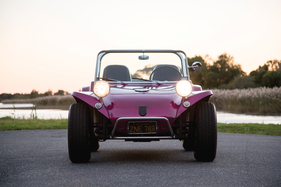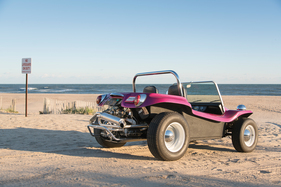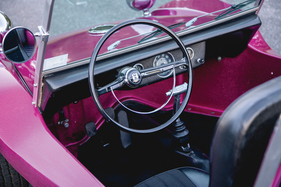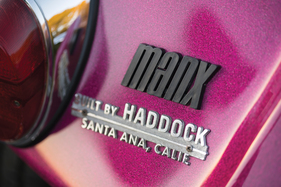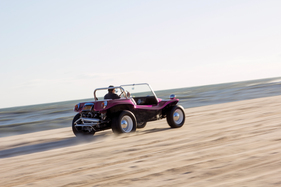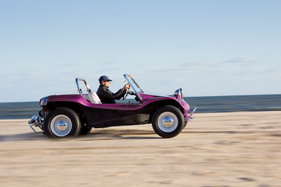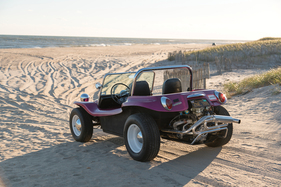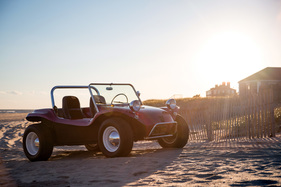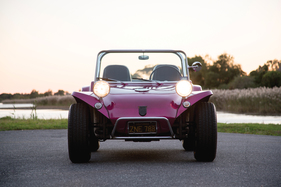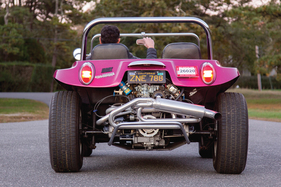The original from the beach - Meyers Manx Dune Buggy
Summary
Although Bruce Meyers did not invent the buggy, with his Meyers Manx he created the prototype of the pleasing Volkswagen-based Dune Buggy clad in a plastic body. Although Meyers himself did not become rich by copying it hundreds of times, his designs are still regarded as the purest representatives of the species. This vehicle report tells the story of the Meyers Manx and shows an example in many pictures.
This article contains the following chapters
- The dunes are calling
- Technician and aesthete
- The first design with a monocoque
- Robust and fast
- Less is more
- Success and imitators
- An original
- Further information
Estimated reading time: 7min
Preview (beginning of the article)
They embodied a new lifestyle and made their owners look younger, the buggies of the sixties and seventies. The new trend came from the USA, of course, and was significantly influenced by one man and his product: Bruce Meyers and his Meyers Manx. Somewhere between California and Mexico, where there are hardly any roads but all the more sand, recreational sports enthusiasts had the idea after the Second World War that there had to be alternatives to the heavy 4x4 off-road vehicles in order to be able to move faster in the dunes. So they took the chassis of a decommissioned limousine, dispensed with the bodywork and other weight-enhancing comfort elements, fitted thick wheels at the rear and the "Dune Buggy" was born. One of these off-roader developers named Scott McKenzie, but he was probably not alone in this, discovered in the Beetle platform a superior alternative to the heavy V8 constructions with rigid axles and front engine. The rear engine ensured traction, the four individually suspended wheels ensured contact with the ground and without a body, a Beetle chassis was also very light.
Continue reading this article for free?
Photos of this article










